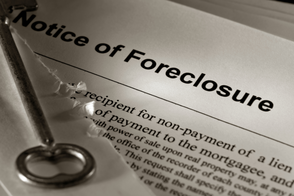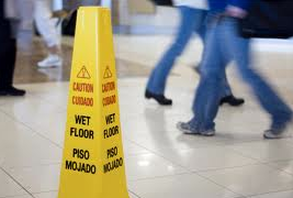 The majority of states hold landlords to strict guidelines as to the appropriate circumstances in which they must return security deposits. Landlords who violate these laws can be held to stiff penalties. A security deposit is usually in the amount of one or two months' rent. It usually must be paid at the time that the Landlord and Tenant sign the lease. The landlord must place the funds in an escrow account and give the tenant any interest generated by such funds. Upon the termination of the lease, the landlord must return the security deposit to the tenant if no violations of the lease occurred. He or she may keep the security deposit or portion thereof for the amount of any damages, which can be proven, pursuant to the terms of the lease. Basic “Wear and Tear” versus Excessive Damage The general rule is that you are not responsible for normal wear and tear. For example, if the dishwasher must be replaced because it has simply worn out, that's the landlord's responsibility. See the bottom of this article for examples of repairs and damages that can and cannot be deducted from your security deposit. If you or your guest cause damage by your unreasonable carelessness or deliberate misuse, however, you must pay for it. The cost of replacing the dining room carpet because you and your friends thought those pizza and BBQ sauce stains would magically disappear is probably on you. You must leave a rental unit at least as clean as it was when you moved in. Because "normal wear and tear" can be interpreted in many different ways, disputes often arise. The bottom line is that the better you itemize and document the condition of your unit when you move in, the better case you'll have against a landlord who tries to gouge you on the way out. Deadlines Landlords are typically required to return security deposits within 14 to 30 days after you move out. The landlord must send, to your last known address, either: Your entire deposit (plus interest, in some states and in some cities), or: A written, itemized statement describing how the deposit was applied to back rent, cleaning, or repairs, plus the remainder of the deposit. How To Get It Back If your landlord fails to return your deposit when and how the law requires, you can sue the landlord in small claims court. If the landlord has intentionally and flagrantly violated the law, in some states, you can recover two or three times the amount of the deposit, plus attorneys' fees and other damages. Ordinary Wear & Tear (Landlord’s Responsibility)
4 Comments
 By Elspeth Crawford False imprisonment, sometimes called false arrest, is a form of injury involving, as the name implies, the unlawful restraint by one person of the physical liberty or freedom of another person. In general. In order to sue over a false imprisonment, a plaintiff needs two things. First, they must have been detained or restrained against their will. Second, the restraint must have been unlawful.
Common Situations
Damages Plaintiffs in false imprisonment cases may be entitled to a variety of different kinds of damages.
 By Elspeth Crawford Many homeowners these days fall into the unfortunate situation of not being able to afford their home loans. When the Grim Reaper of mortgages comes around, foreclosure is his scythe. Foreclosure is a catch-all term for the legal process by which a lender attempts to recover the balance of a loan from a borrower who has stopped making payments by forcing the sale of the asset used as the collateral for the loan, typically a house. Foreclosures are governed by the law of the state where the mortgaged thing is. Default The foreclosure process is triggered once the borrower (mortgagor) falls so far behind on her payments that she enters default. The conditions for entering default vary, based on state law and terms in mortgage agreements. Once a borrower enters default, she starts to accumulate late fees, legal fees, and other charges that are added to her outstanding debt, as determined by the mortgage agreement and state law. It’s important to note the lender does not have to foreclose; they are free to negotiate with the borrower. For example, they might agree to adjust the terms of the mortgage, refinance, allow the borrower to sell the property, or allow the mortgagor to make up for his or her missed payments. Types of Foreclosures Generally, there are two varieties of foreclosures: judicial foreclosures, which require a court order, and non-judicial foreclosures, which do not. In judicial foreclosures, the mortgagee must go to court and prove that it owns the mortgage and has the right to foreclose on it. Non-judicial foreclosures allow a mortgagee to foreclose without going to court. This is cheaper and quicker than a judicial foreclosure. Non-judicial foreclosures may only be used where the mortgage has a power-of-sale clause. These clauses most often appear in deeds of trust, a type of real estate secured lending instrument similar to a mortgage. Acceleration Clauses Most mortgages now include acceleration clauses. According to these clauses, if borrowers fall far enough behind in their payments, the rest of the loan is due immediately. Mortgagors usually invoke these clauses as a prelude to foreclosure. Most states regulate acceleration clauses, either generally, as specifically as applied to mortgages, or both. Mortgage-Backed Securities In recent years, lenders frequently bundled groups of mortgages into mortgage-backed securities, and then sold shares of the securities to investors. As a result, some mortgages have many owners. Others have changed hands so many times that it is difficult to determine who actually owns them. As a result, it is often difficult for the mortgagors to modify the terms of their mortgage. Similarly, mortgagees might have trouble proving that they own a mortgage they want to foreclose on. Right of Redemption In some states, mortgagors have a right of redemption that allows them to get back foreclosed property. If the original mortgagee owns the property, mortgagors may exercise the right by paying the bank the unpaid balance of their mortgage. If the property was already resold at auction, mortgagors must pay the purchaser whatever he or she paid for it. Rights of redemption only last for a limited time, which varies by state. The Process The foreclosure process differs state by state, but we can take a look at the general steps that are taken. If you're faced with foreclosure, it's important that you research your state's laws and practices. Foreclosure proceedings can begin after a single missed payment, but it isn't very likely. Most banks and lenders have a grace period for late payments, usually with a fee added on. It typically takes being a full 30 days late for the alarm bells to go off. After the second missed payment, you'll be getting some phone calls. Many lenders will only accept both late payments to bring the loan current. They also may refuse any partial payments. Once you fall three months behind, things get serious. This is typically when most lenders will begin the foreclosure process in one of two ways: judicial sale, which requires that the process go through the court system, or power of sale, which can be carried out entirely by the mortgage holder. All states allow judicial sale, while only 29 allow power of sale. If your state allows power of sale, the loan papers will usually have a clause that says this method will be used. Power of sale is typically faster than the judicial route. Let's look at both methods. Judicial Sale:
Power of Sale:
Both types of foreclosure require that any other involved parties be notified of the proceedings. For instance, if the homeowner took out another loan against the house with a third party, that lender must be contacted and its loan amount must be paid from the auction proceeds. If the third-party lender isn't paid, it can apply the mortgage to the new property owner. Many times, the lender will actually buy the property back and attempt to sell it through the real estate market at a later date. There can also be deficiency judgments made against the borrower if the sale of the property doesn't satisfy the amount of the loan. The entire difference between the two can be required, although some states only require that difference between the fair value of the property and the loan amount be paid. There's one more type of foreclosure that's almost completely obsolete, called strict foreclosure. In these cases, once judgment is made on the lawsuit, the property is automatically assumed by the mortgage holder. Only Connecticut and Vermont still allow this practice.  By Elspeth Crawford Slip and fall accidents are among the most common personal injury claims out there. They come in many varieties. A plaintiff might slip on a floor of a public business, trip over a toy in a residential home, stumble over a hole in the ground while walking outside, or more. Depending on the situation, the path to recovery can be different, and an attorney may be needed to help steer the case toward a satisfactory end. What to do Immediately After a Slip-and-Fall Accident The first thing to do after any accident, not just a slip-and-fall, is to get needed medical attention. Such accidents can break an arm, twist an ankle, or worse, and you don’t want to risk compounded the damage by not getting timely treatment. Assuming you’re in the condition to do so, it’s extremely important to create a record of the accident while it’s still fresh in your mind. Write it down if you can. Take note of the sequence of events leading up to the accident, the names and contact information of any witnesses, and what anybody said before, during, and after the accident occurred. If possible, take pictures of the accident scene. If you fell in a public facility, like a convenience store, the facility may file a proprietary accident report, but it’s always prudent to create one of your own so your version of events is preserved for negotiations down the line. Liability Proving fault in any personal injury claim is a tricky, circumstance-specific business. When dealing with slip-and-fall cases, much comes down to where the accident happens. The dimensions of the owner’s responsibility differ depending on what kind of locale is at issue, so be sure to tell your lawyer not only how and why you fell, but also where.
When thinking about who’s at fault for a slip-and-fall accident, remember that there must be a responsible party whose negligence caused the injury. Most state laws take the plaintiff’s own negligence into account, so if you were partly or completely responsible for your own injury your chances of recovering decrease dramatically. If you’re in a convenience store and slip on a puddle of grease which the management failed to clean up, you have a good case, but if you’re in the same convenience store and trip over your own untied shoelaces, your case will likely go nowhere. Damages If you have a successful slip and fall case, you stand to recover the kinds of damages you would normally recover in any personal injury case. These include compensation for wages lost, medical bills paid, potential future medical expenses, and damages for pain and suffering caused. |
Archives
January 2022
|
Lake Norman Location
9620 Sherrill Estates Road
Huntersville, North Carolina 28078
(704) 274-5677 main
(704) 231-5762 text
(877) 208-7577 fax
9620 Sherrill Estates Road
Huntersville, North Carolina 28078
(704) 274-5677 main
(704) 231-5762 text
(877) 208-7577 fax
